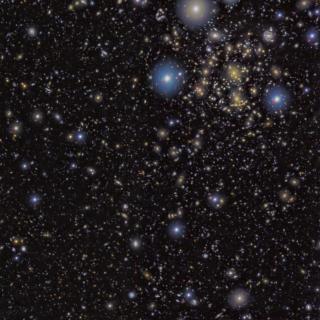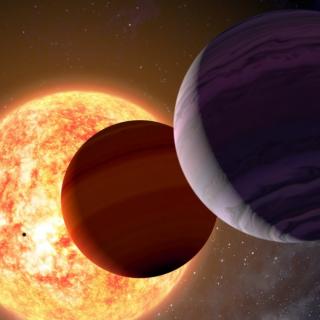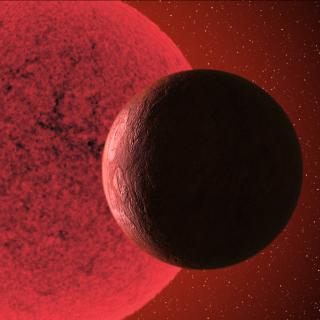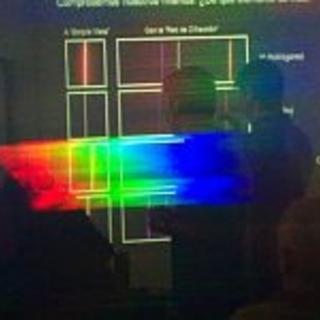Telescopio Nazionale Galileo
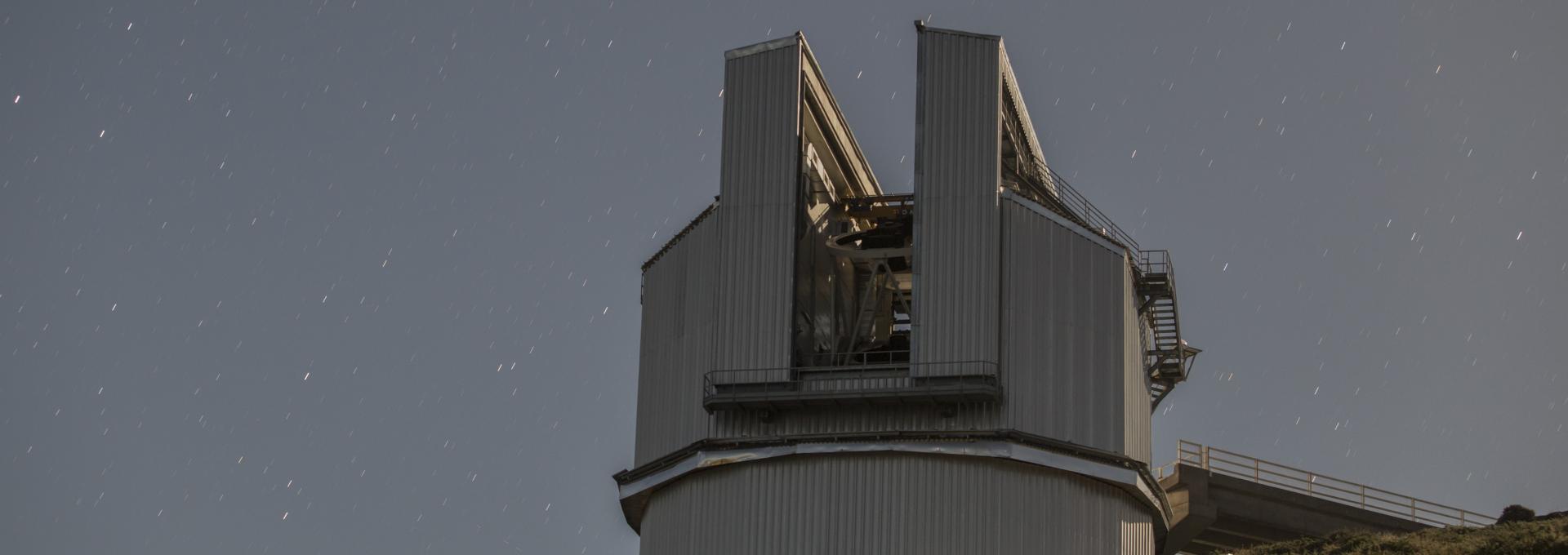

The Telescopio Nazionale Galileo (TNG), is a 3.6m alt-azimuth telescope with a Ritchey-Chretien optical configuration and a flat tertiary mirror feeding two opposite Nasmyth foci and represents the largest Italian optical/infrared telescope.
It belongs to, and is funded by the Italian National Institute of Astrophysics (INAF). It is managed by the "Fundación Galileo Galilei - INAF, Fundación Canaria" (FGG), a Spanish no-profit institution constituted by INAF whose aim is to promote the astrophysical research, as foreseen in the international agreement of May 26, 1979 TNG is open to the international community of scientists who can twice a year submit their observing proposals to the TNG time allocation committee.
Observing time is allocated to those proposals having the highest scientific merit, regardless of the nationality of the proposers.
The following table shows the main TNG optical parameters.
Diameter of primary mirror 3.58m
Focal length 38.5m (f /11)
Diameter of secondary mirror 0.875m
Scale on focal plane 5.36 arcsec/mm
Vignetting-free field 25 arcmin diameter
The mirrors of TNG are among the best optical surfaces ever built for astronomy. The combined optical quality of the 3 mirrors yields 80% of the light Encircled Energy in only 0.11 arcsec.
Another important feature of the TNG is the presence of an Active Optics (AO) system to perform real-time, low frequency correction of the optical components in order to ensure the best optical performances in all conditions and to compensate for the deformations of the primary mirror (M1), which is too thin to be completely rigid. The AO system consists of two Shack-Hartman wavefront sensors (one for each focus) to sense wavefront deformations using an off-axis star. This information, properly treated, is used to correct the optical surface of the primary mirror (M1) and the positions of the secondary mirror (M2).
The M1 surface is modified through 78 mechanical actuators pushing axially on the M1 back face; M2 is mounted on an exapod system (six expandable arms) used to keep the mirror in the correct position and tilt with respect to M1.
The interface between the telescope fork and the instruments at both Nasmyth foci is provided by two rotator/adapters (R/A). Their main function is to compensate for the field rotation by a mechanical counter rotation. Each R/A also includes probes and sensors for the AO wavefront sensing and for the guide star tracking.
The project originated in 1982 with the preliminary study of a new generation telescope which would take Italian astronomy into the vanguard, in terms of both instrumentation and technology. The entire project is the fruit of collaboration between all Italian astrophysical institutes and a score of Italian high technology companies which have designed, developed and constructed most of the telescope and its instruments. Since its inauguration in June of 1996, the TNG has been open to all Italian and International scientists who can twice a year submit their observing proposals to the TNG time allocation committee.
The major aim of TNG is to continue providing the Italian and International scientific community with the best possible tools for astrophysical research. Beside guaranteeing a continuous upgrade of the existing systems to maintain the best possible performances, TNG is also developing new instruments.
The first and most advanced is "GIANO", a high resolution spectrometer operating at infrared wavelengths.
Once in operation (most probably before 2007) it will be the only instrument in the world able to measure in great details the physical parameters of the lowest mass stars (about 1/10 of the solar mass). It will also allow to indirectly detect the presence of small planets orbiting around these cool stars, and in particular of planets similar to our Earth and with habitable conditions, that is with surface temperatures compatible with the organic life.
In parallel to its own upgrade, TNG plans to deeply collaborate with other European telescopes, and in particular with those at the ORM, to create a network of highly optimized and efficient facilities open to international scientists.
An important step in this direction is the time-exchange agreement between TNG and WHT which is running with great success since 2002.
This allows astronomers to choose the most convenient facility for their necessities without having to submit separate observing proposals for each telescope.
TNG is a general-purpose facility open to the international community.Programs from virtually all the fields of astronomical research are normally performed at the telescope. These include, among the others: The study of minor bodies orbiting the sun, e.g. comets and asteroids, aimed at reconstructing the history of the formation of our solar system.
The search for planets around nearby stars, aimed at understanding if other planetary systems exist, if they are similar to our own and, eventually, if other habitable planets may exist "close to us", i.e. within 100 light years (or 900,000 billion kilometers) from us.
The study of the furthermost objects in the universe, aimed at determining how the first stars were formed and how they produced the majority of the chemical elements (oxygen, iron, etc.) when the universe was very young, i.e. only 500 million years after the "big-bang" which generated it.
Note, for comparison, that the age of the universe is 15 billion years and the solar system was formed 5 billion of years ago.
